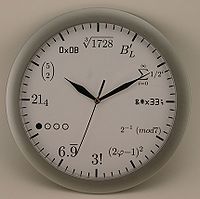Course:MATH103/Archive/2010-2011/207/Lectures/Lecture13
| Faculty of Science Department of Mathematics | |
|---|---|

| |
| Course Pages | |
| Course Policies | |
| Math Solvers | |
| Exams | |
| Quizzes | |
| Assignments | |
| Lectures | |
Lecture 13
Readings For This Lecture
- Chapter 7, pages 133 to 137 (up to subsection 7.5)
Summary
Group 7: Add a summary of the lecture in this space. Include examples, discussion, and links to external sources, if desired.
Exercises
1. A coin was tossed 8 times by each person in a group of people. The number of people, , who got a total of heads were as follows:
Based on this experimental data, determine the (empirical) probability of obtaining heads out of 8 coin tosses for . Find the expected number of heads given the above data. Compare your results with the expected value of heads in a theoretical distribution in which the probability of H and T are equal.
| Solution |
|---|
|
This result is very close to the theoretical expected value of heads which is 50% of the time. |
2. Find the probability of randomly selecting 4 aces from a well-shuffled deck of 52 cards. Find the probability of randomly selecting 4 hearts (of any value) from a well-shuffled deck of 52 cards. (Note: a full deck of cards contains 13 hearts.) What is the probability of randomly selecting the sequence of cards of value “King”, “Queen” Jack” (of any suit or combination of suits) from a well-shuffled deck of 52 cards.
| Solution |
|---|
|
I think these are right now :|. The probability of selecting four aces from a standard deck of cards is equal to = The probability of selecting 4 hearts from a deck is The probability of drawing a King of any suit, then a Queen of any suit and then a jack of any suit is
|















